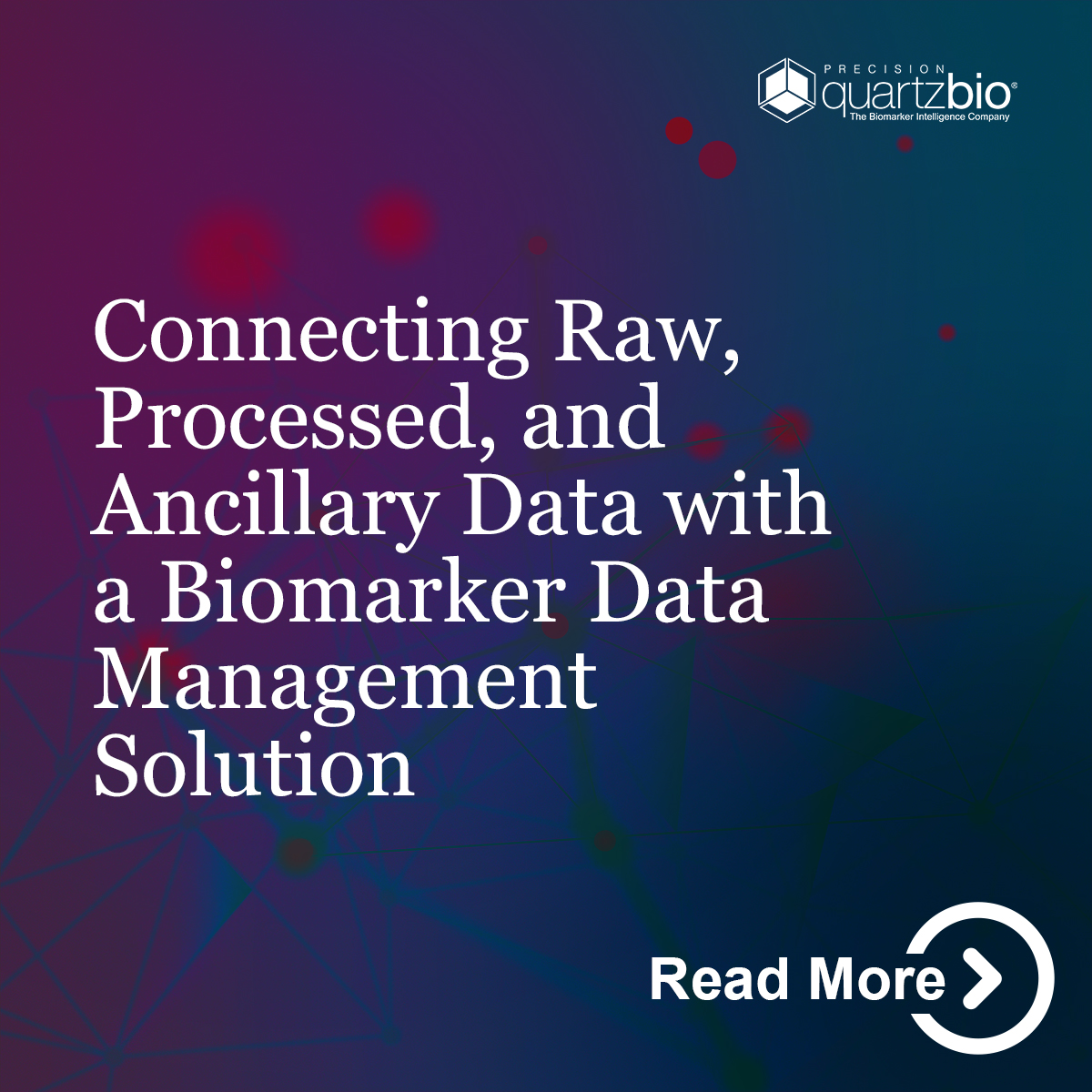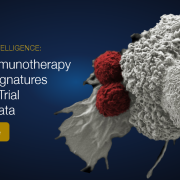
Translational and clinical teams spend more than 70% of their time managing, cleaning, and harmonizing data generated in biomarker-rich clinical programs.
In a webinar now available on demand, we demonstrated how the QuartzBio® Biomarker Intelligence solution addresses one set of frequently intractable challenges: connecting raw, processed, and ancillary data across multiple clinical studies.
We invite you to sign up for on-demand access to the recorded webinar.
Multiple Assay Modalities, File Types, Data Storage Locations
As we have previously described, research teams are generating biomarker data from a wide variety of assay modalities, and this data can be housed in multiple, disconnected storage locations. In the example use case described in the webinar, data was being generated from targeted assays like flow cytometry and immunohistochemistry to high-throughput omics assays.
QuartzBio’s solution is specifically engineered to ingest, standardize, visualize, and analyze this data. The unified data platform connects raw and processed data to ancillary files, such as the images used for immunohistochemistry quantification or PDF omics reports. All of the raw files are available for download individually or in bulk. They can also be previewed directly within the user interface.
As shown in Video 1, the QuartzBio enterprise data platform can centralize and harmonize data from multiple file types across clinical programs, including:
- Image files
- Tabular files
- Omics files, e.g., BAM or VCF files
- Sequencing reports for particular mutations or genomic regions of interest

As shown in Video 2, QuartzBio’s solution can combine processed files with harmonized clinical annotations, with both subject and sample level data, as well as the relevant quantified reportables for a specific assay modality. These reportables are very configurable and can be changed according to the needs of a sponsor, a program, or even a specific study.

The QuartzBio platform can also further preprocess raw assay data directly and apply quality control metrics as well as normalization techniques.
In summary, the webinar demonstrated how the biomarker data modules of the QuartzBio platform can enable easy access to both key raw and processed data assets through the user interface, in addition to robust visualization and data exploration capabilities.
Flexible Biomarker Data Management Means Faster Deployment
QuartzBio’s enterprise-grade Biomarker Intelligence provides a flexible, scalable solution for transforming biomarker data into consumable information across a sponsor’s entire study portfolio.
This resilient approach is enabled by a robust enterprise data platform with a library of pre-built, configuration-ready pipelines for data ingestion.
Contact us to learn more about data management SaaS solutions and let us know which additional features and capabilities you’d like featured in our next webinar.



